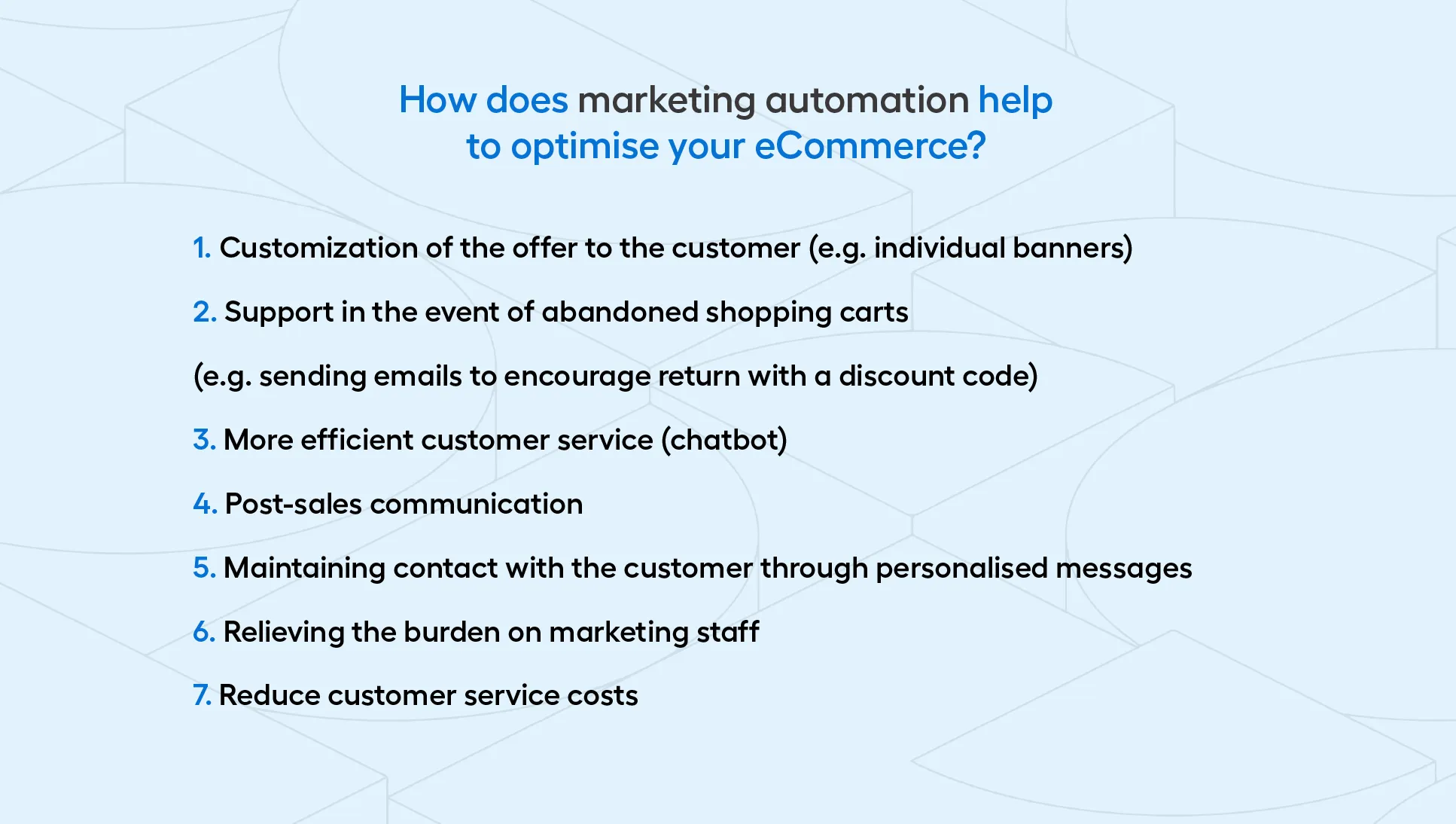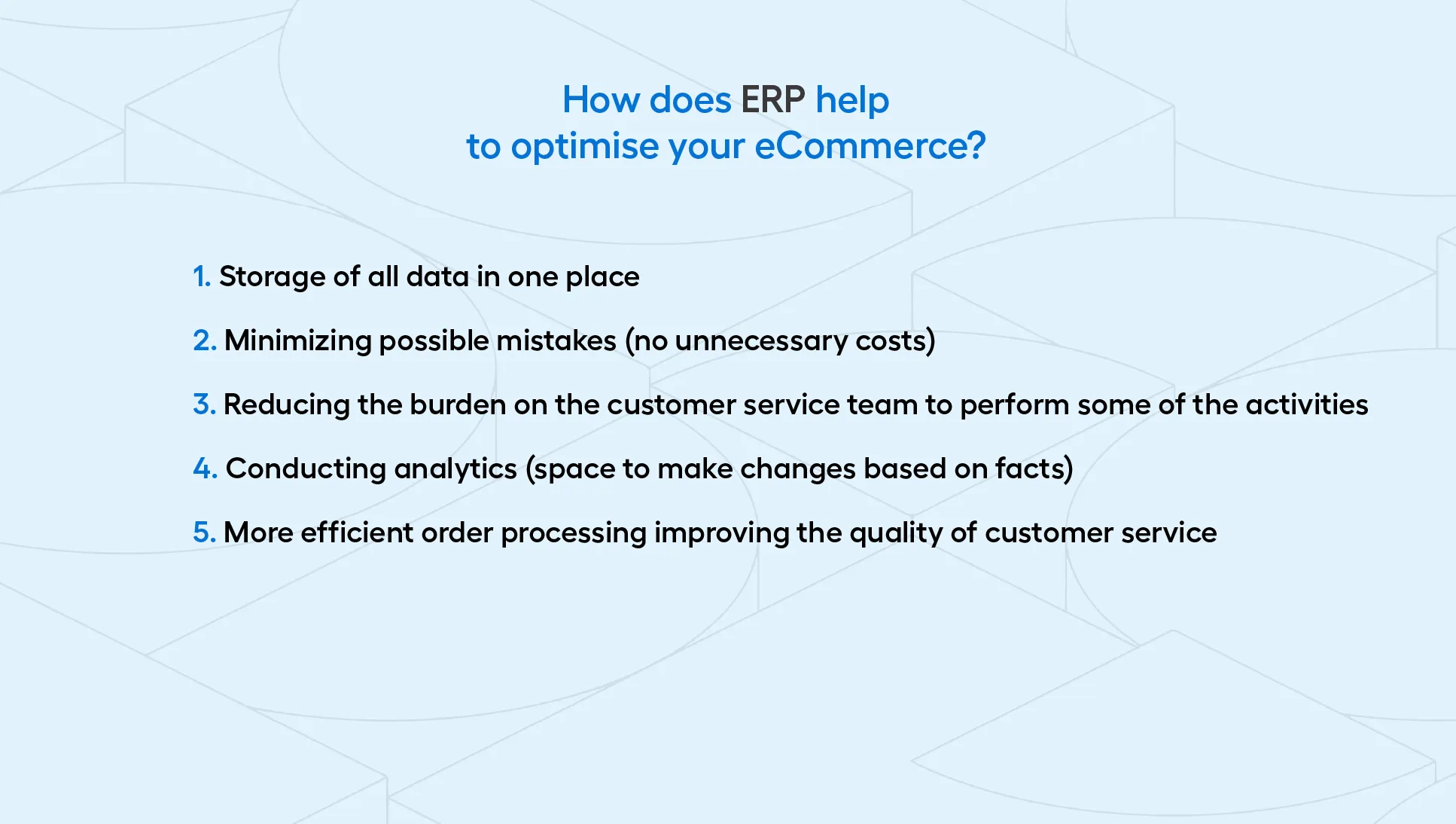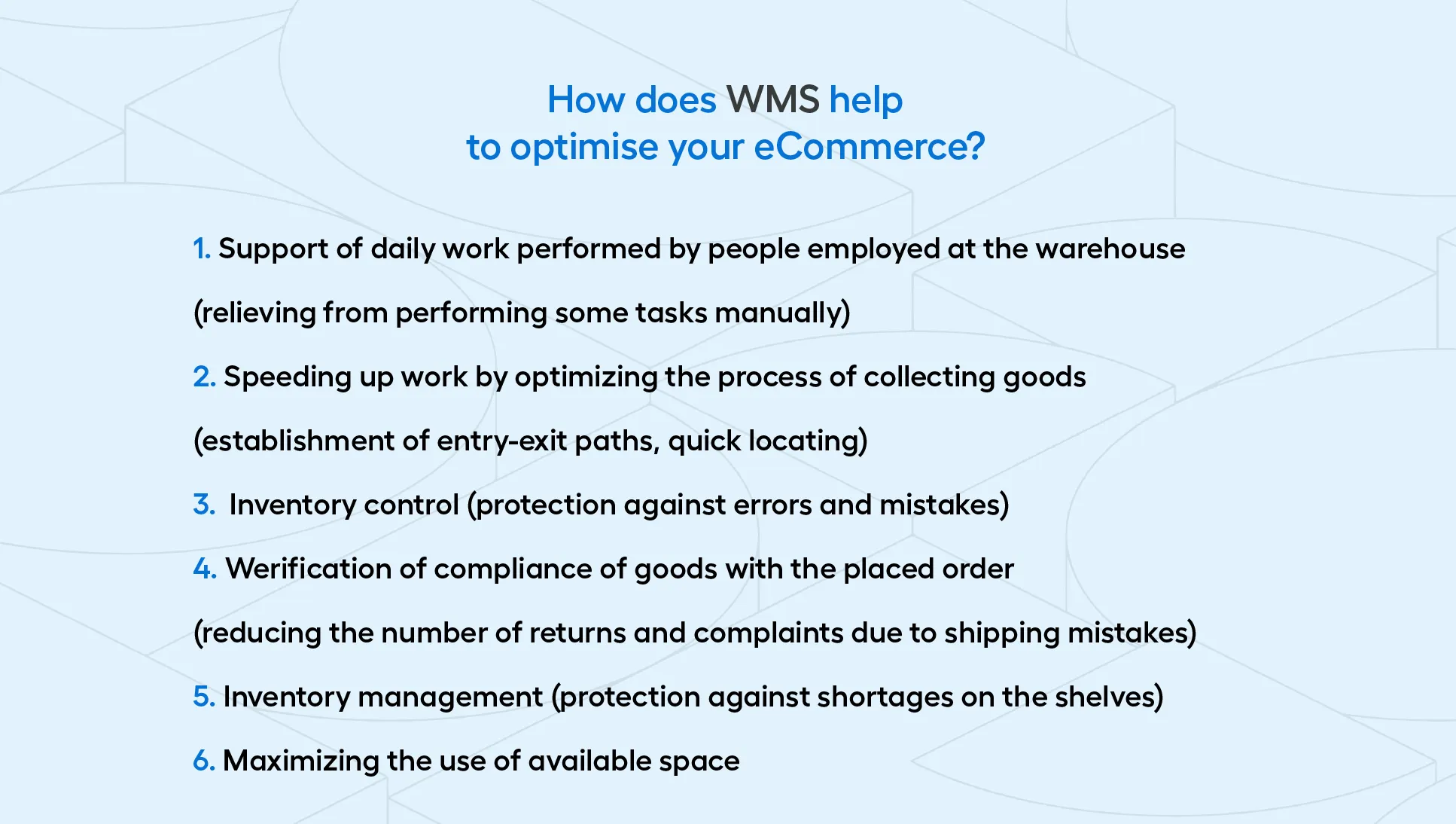The following article is the first publication in a series of blog posts titled "Optimizing eCommerce Costs" on various ways to optimize your business. We begin by focusing on optimization through automation, discussing the use of marketing automation, ERP and WMS, followed by CRM, PIM and outsourcing. As part of the series, we will also take up the topic of eCommerce technical optimization on Magento or online store monitoring.
At a time when inflation is nearing 20%, customers are buying less (making more rational decisions), and the cost of doing business is constantly rising (e.g., due to increases in energy and fuel prices, etc.), every store owner, both stationary and online, is looking for ways to optimize their business to reduce costs. One tactic that can be recommended to eCommerce managers in this regard is to take advantage of the opportunities provided by process automation. Implementing various types of technological solutions allows you to reduce the resources (time, money, etc.) previously used to perform a certain catalog of repetitive tasks, or shift them to areas that can provide additional profits. Check how and try it out in your eCommerce?
Areas of eCommerce - what can be automated?
Product information, accounting, logistics, order processing, marketing, customer service and many others - these days the catalog of eCommerce areas where we can use partial or complete automation is really wide. What's more, new possibilities in this area are constantly emerging, streamlining previously problematic issues. However, a question comes to mind, on the automation of which areas to bet first?
The choice of appropriate solutions should be tailored first and foremost to the needs of your eCommerce - especially in terms of the most time-consuming areas and tasks where mistakes often occur. Thus, it is worth preceding your decision-making with an analysis of how your eCommerce users behave and what problems that arise generate unnecessary additional costs. It is also worth considering what tasks are spending too much time on, when it could be easily reduced and the resources thus gained shifted to more creative tasks. Only in this way will it be possible to achieve the expected results of eCommerce automation.
eCommerce automation and the possible benefits
I'm sure you've already heard about how automating various processes in an online store allows you to achieve such benefits as:
- saving employees' time and being able to use their skills to carry out activities that require a human factor,
- reducing the number of mistakes made,
- more efficient operation of the e-shop,
- reducing bottlenecks (by digitizing time-consuming tasks),
- improving the shopping experience of customers (including by speeding up order processing),
- greater comfort for the entire team.
You can achieve all of the above benefits by choosing to automate the most important processes in your eCommerce business. Above all, however, you can count on cost optimization - by taking advantage of automation opportunities, you will not have to hire additional people to perform time-consuming and repetitive tasks. What's more, by automating some of the activities, you will be able to reallocate the time, financial and other resources thus gained (so far) to the implementation of activities aimed at the development of eCommerce (including increasing the profit it makes).
All these benefits require implementing additional solutions and performing integration of your sales platform with external systems, which might seem like a daunting task, but in practice - due to the ability to connect in most cases through APIs - can be done in a short period of time, with no downtime for your daily operations. Now that you know what benefits you can gain, it's time to consider what areas of eCommerce you can automate, and then - decide on the most necessary implementations and integrations for your business.
Marketing automation - making everyday eCommerce operations easier
Usually when one hears about automation of eCommerce activities, these words refer to a certain catalog of marketing activities that in many respects are already considered the standard for the operation of online stores - personalizing product offerings on the site and conducting communications with regular or potential customers (especially email marketing). Although, of course, as we mentioned earlier, the applications of automation are much broader, there is no denying that marketing is one of the leading areas where its use comes naturally.
What capabilities does MA provide? Special software will allow you to, among other things:
- create customized product recommendations (e.g., you may also like),
- displaying customized banners to the customer,
- offering personalized discount codes (e.g., for signing up for a newsletter),
- rescuing abandoned shopping carts with push notifications or pop-ups,
- sending personalized emails when a predetermined trigger or event occurs (e.g., newsletter signup, purchase, birthday, one year from first purchase, cart abandonment with the option to return to it),
- conducting after-sales communication (sending emails asking people to complete a survey about the buying process or posting feedback on the site),
- taking care of customer service with a chatbot that sends a welcome message when you first arrive on the site or answers basic questions.
These types of activities allow you to build a relationship with your customers, while translating into better eCommerce sales results. Of course, it should be taken into account that implementing marketing automation solutions can be time-consuming - due, for example, to the need to choose the best tool, create scenarios, configure and integrate the tool with other solutions, design subsequent messages according to new needs or constantly verify that the processes are carried out flawlessly. The investment of time and cost at the beginning, however, translates into facilitating the building of customer relationships and saving resources (time and money) in the long term.

Automation of order processing - ERP
Manually verifying and completing an order, checking the status of payment, processing complaints, sending invoices, and on top of that, simultaneously handling the numerous channels through which customers can make a purchase (online store, social media, marketplace, etc.) - with limited resources in the team (which will not increase overnight) and a sudden increase in eCommerce orders, this all sounds like a recipe for quick failure. The answer to such a challenge that can arise and cause negative consequences (customer dissatisfaction, mistakes and errors resulting in unnecessary costs, etc.) is to automate orders using an ERP system.
Combining a sales platform with an ERP system is a way to improve customer service by managing the various processes taking place in an online store from one place. The ERP is equipped with a number of modules (including commerce, projects, CRM or production - selected depending on the needs of the company) that collect all relevant data for employees in one place (a central database accessible to all people using the system).
Some of the most popular ERP functions (repetitive and time-consuming activities performed in eCommerce) include:
- collection of data on customers and suppliers,
- handling inquiries, offers and orders,
- price list and promotion management,
- generating invoices and sending them to the customer,
- checking payment statuses,
- posting of payments,
- sending a list of paid orders to the warehouse,
- generating waybills,
- creation of reports and analysis.
The use of an ERP system in daily eCommerce operations means that the above activities do not have to be performed manually, which significantly saves time resources. The correctness of the flow of data between different departments of the company (e.g., thanks to up-to-date knowledge of what stage of completion a specific order is at) is, in turn, the easiest way to eliminate problems with order processing (especially in terms of extended lead times), and thus - to reduce the cost of running eCommerce.

WMS - eliminating bottlenecks in eCommerce logistics
Does your online store handle a large number of orders (including returns and complaints) every day? If so, you're certainly well aware that as the number (or size) of orders increases, so does the number of mistakes that can be made (generating additional costs), the workload of employees (forcing further hiring) or the length of order fulfillment (resulting in customer impatience due to extended delivery time), among other things. However, this is not a situation without a way out - and a tailor-made Warehouse Management System helps in eliminating the negative consequences of bottlenecks.
What benefits can you count on when you decide to integrate your online store with WMS? This system will make it easier for you, among other things:
- exercise control over inventory through automatic updating (minimizing mistakes in this area),
- carrying out the entire order fulfillment process - from receipt to release of goods (especially in terms of error-free localization of a given product and optimization of the collection path by an employee),
- Inventory and inventory management - in the system you set a minimum stock of products in the warehouse, and when it is reached (without your intervention) an order for a new delivery is placed, ensuring that you are not left without goods on the shelves at the worst moment,
- optimize the use of storage space (highest efficiency in the distribution of goods on the shelves),
- verification of compliance of the collected goods with the order made.
Coordinating the movement of goods by using a WMS is an opportunity for eCommerce to speed up the processes taking place, make it easier for warehouse workers to perform their duties, minimize mistakes and errors - all of which reduces the cost of daily operations and avoids both financial and image losses.

Optimize - reduce eCommerce costs with automation
More efficient store operations (and thus greater customer satisfaction by speeding up order processing), lower costs of daily operations, better distribution of work, less risk of making mistakes in order processing - these are just some of the benefits you can achieve when you decide to implement automation into your eCommerce daily life. At the same time, by taking advantage of modern technology, you can plan for the further development of your business without having to look for additional resources, which also has a positive impact on your company's financial situation. From a business point of view, then, automation simply makes sense.
The solutions we describe - marketing automation, ERP and WMS - is the first part of our series on eCommerce optimization through automation. In the next parts, we also take up the topic of, among others CRM, PIM and outsourcing and their impact on lowering eCommerce costs. Read on to learn more, and then consider which of the listed areas in your online store you should optimize to achieve the desired end result!



